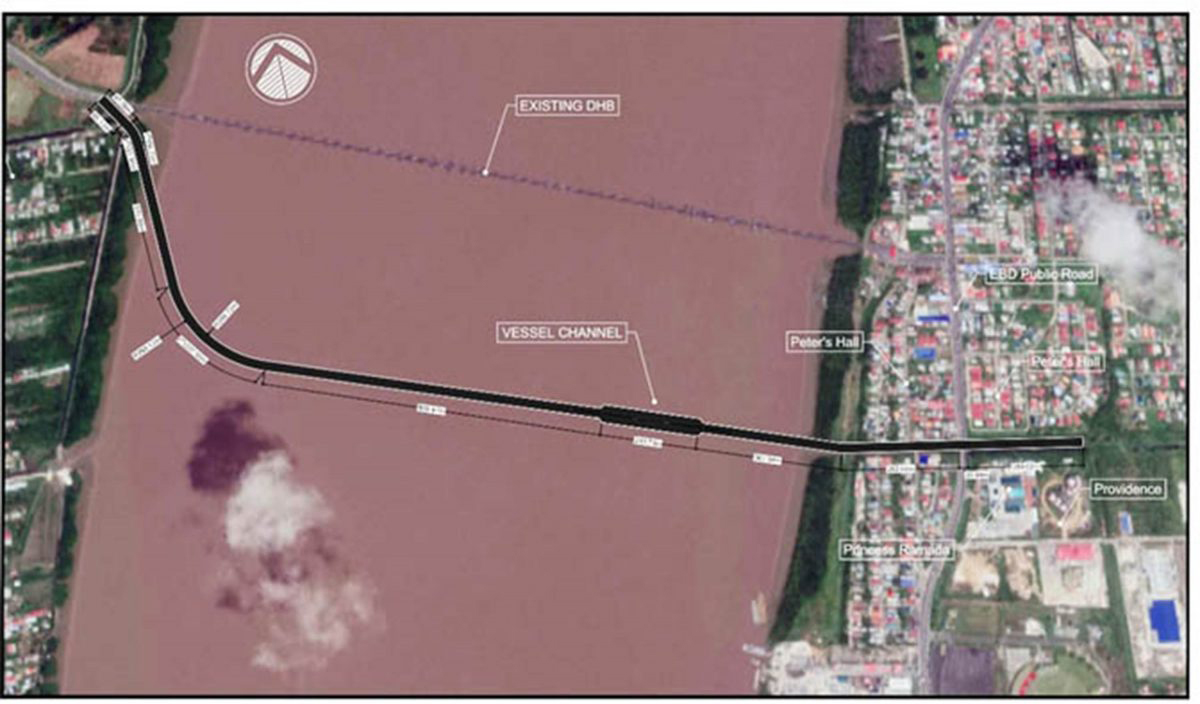Although China Railway Construction Company Limited and its partners will design, finance and build the new Demerara Harbour Bridge, it is the Government of Guyana that will decide on toll fees, according to Minister of Public Works Juan Edghill.
And while a decision on how much those tolls will be is still to be decided, Edghill is assuring that it would be done “not to create hardships” for people of this country.
“The issue of tolling is a decision government will make as a matter of policy. That has not been left up to the contractor. At the appropriate time, that will be dealt with publicly,” Edghill told Sunday Stabroek when contacted.
He explained that the current focus is “getting the new bridge built,” saying that while not discussed in public, government is already analyzing its options.
“I think speaking now will be preemptive before government has made the decision. That is a matter that has not been determined as yet. The repayment plan and all of that is not something we will be discussing publicly now,” he stated.
“You can be assured that the PPP/C government is committed to ensuring that we bring benefits to people and not hardships. We are guided by that philosophy. Our development agenda will not impose hardships to people,” he added, informing that his government practices continuous analyses.
Two weeks ago, and under the Design, Finance and Build (DFB) model, government signed a US$260 million contract with China Railway Construction Corporation (International) Limited in a Joint Venture with China Railway Construction (Caribbean) Company Limited and China Rail-way Construction Bridge Engineering Bureau Group Company, for the construction of the new bridge.
Though the design for the bridge is yet to be finalized, preparatory works will commence immediately for the construction of the crossing. It is estimated that construction will last for two years. The length of the bridge is to be 2.65 kilometers with the width of the driving surface to be 23.6 meters to accommodate four lanes.
Since March, government had been saying that a deal for the bridge was imminent and that it was anticipating closing negotiations.
While China State Construction Engineering Corporation (CSCEC) had been the most responsive bidder when companies tendered for the project last year, negotiations fell through.
CSCEC, in its tender document, pegged the cost for the construction of the bridge at US$256,638,289.
Government then began negotiations with the second most responsive bidder, China Railway, and its partners, in January of this year.
Sources had explained to this newspaper that CSCEC’s proposed rate of interest was not agreed to as the company’s negotiators were adamant that it would not accept a fixed rate and had wanted to set the conditions for changes “that would have been solely determined by them”.
When completed, government wants a new four-lane, high-span fixed bridge in the vicinity of the current location and which terminates at Nandy Park on the East Bank of Demerara. “The new design of the Demerara Harbour Bridge will not require opening or retraction to allow for maritime traffic and will be built with a life span of at least 50 years,” the bidding document states.
On Saturday, the Private Sector Commission (PSC) congratulated the Government on the recent signing of the new contract, while saying the government’s investment in the bridge when calculated in terms of its cost benefits to the country is enormous.
“For instance, taking into consideration that conservatively, a total of 12,000 vehicles traverse the bridge on a daily basis with an average number of person per vehicle of five; with the current traffic situation, commuters lose approximately two – four hours per day in traffic alone, this would work out to about a loss of 43.8 million productive hours or the equivalent of 5 years’ loss of productive hours.
“The traffic congestion problem started to worsen about five years ago so imagine then the loss in productive hours, collectively over five years’ period. By using per capita income of US$5,000 to arrive at an average hourly rate of US$10, would amount to a loss of US$2.2 billion in productive time over this five years’ period – equivalent to almost 50% of pre-oil GDP – that is, the cost of not having this new bridge in place,” it added, before saying it looks forward to the commencement of construction of the overdue bridge.
There has been a major controversy over the decision by the Environmental Protection Agency not to require an Environmental Impact Assessment for the project.
Commuters crossing the existing Demerara Harbour Bridge have paid what are considered to be relatively low rates for decades as opposed to travellers over the Berbice Bridge which had been constructed under a Build, Own, Operate and Transfer model. Over the period that the Berbice Bridge has been in operation there have been unrelenting pleas for the lowering of fares.






